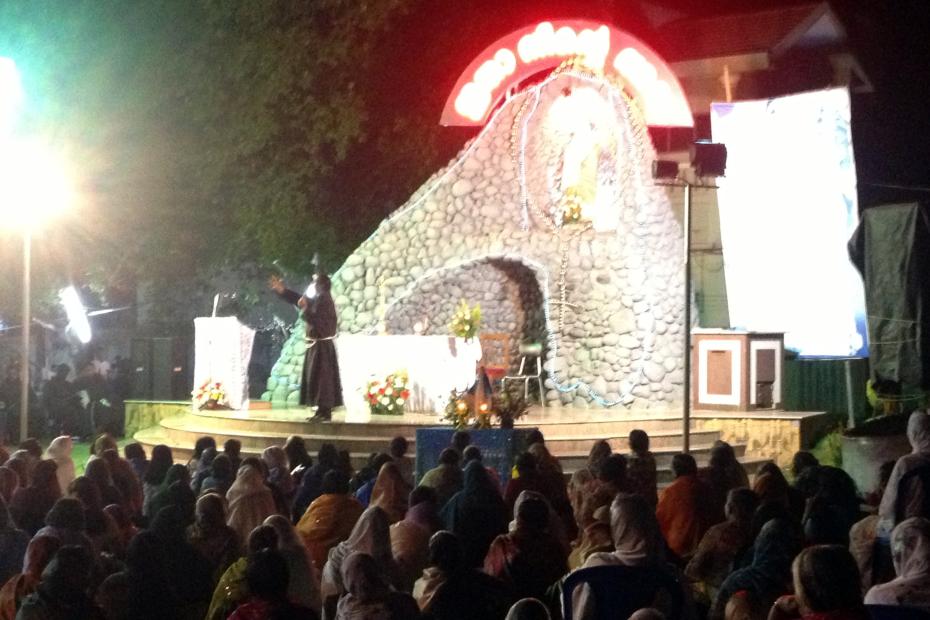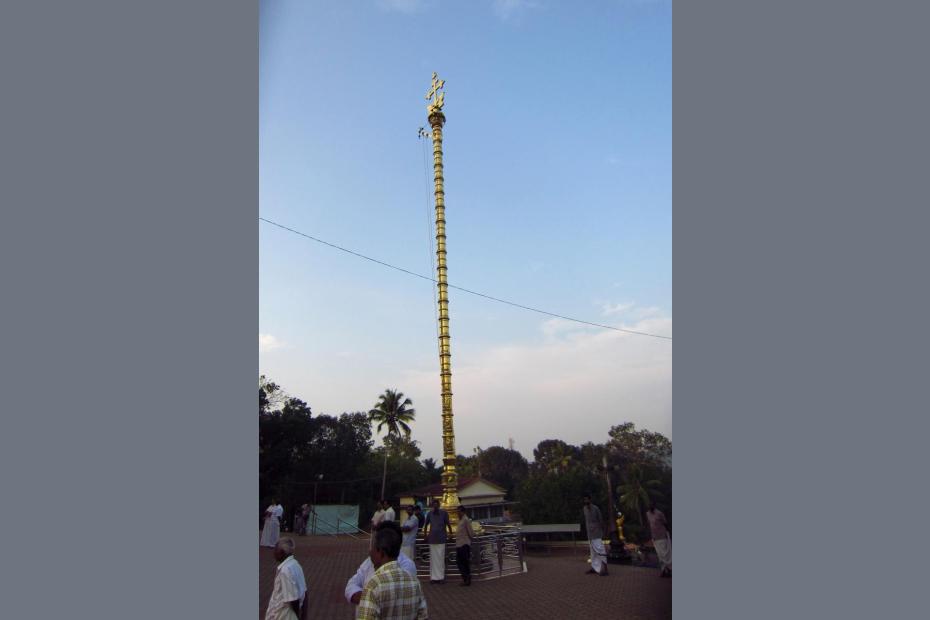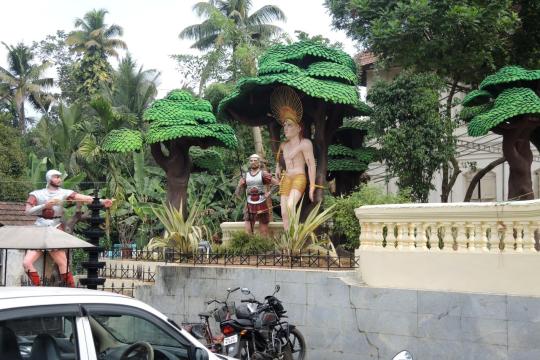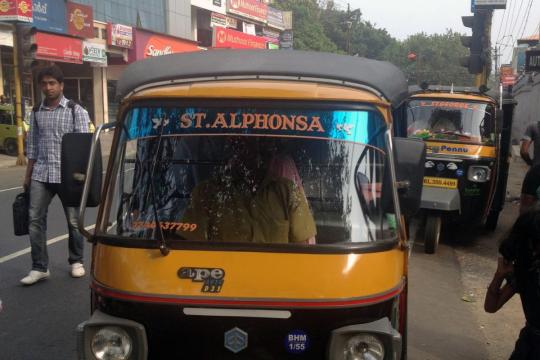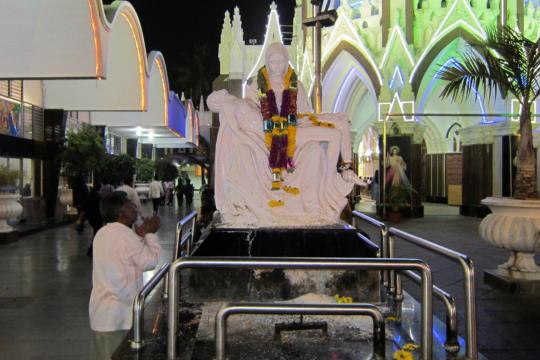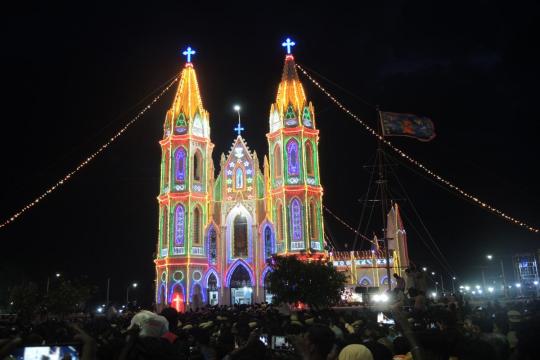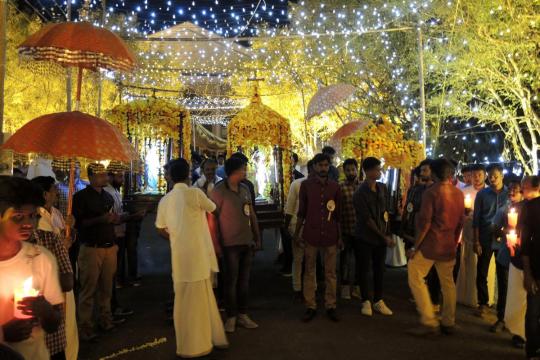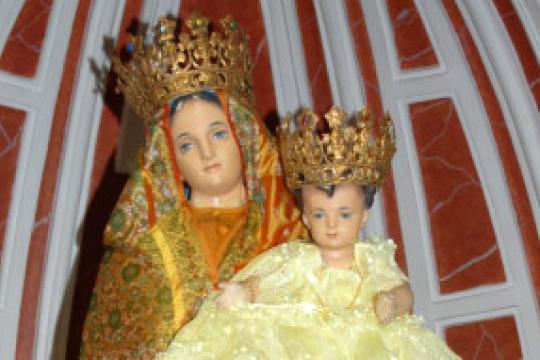Feasts, a tremendously important part of parish life in southern India, are a period of nine or 10 days that include Masses, novenas with visiting preachers, music, processions, and food. As important as Mass attendance and prayer at home are for Catholics in Kerala, nothing compares to the energy put into parish feasts.
Feasts celebrate a particular saint at the church, often not the saint for whom the church is named. They are held throughout the year, except during Lent. The church often will be decorated in neon, quite elaborately at important churches, and almost always with some colorful lights. Processions involve large numbers of parishioners, especially children and young people, and can entail carrying statues on shoulder-borne palanquins, or in decorated chariots pulled through the streets. The latter roles are privileges reserved for donors or certain families.
One diocesan official reported that his bishop was extremely concerned that a huge proportion of the parish’s funds went to the feasts, which diverted from other pastoral activities and catechesis. The bishop’s best hope, he said, was to keep feasts to nine days. In a country where graft is a significant problem, parishioners sometimes express concern that the feasts are an opportunity for some parishioners to direct parish resources to their own benefit. The feasts undoubtedly serve local business and government interests, and in some places provide commercial opportunities through fairs and the like. More significantly, they provide opportunities for communities to display the importance and power of their saint, and to outdo (or at least match) neighboring communities with signs of prosperity and devotion.
Feasts are announced by the presence of a flag over the church. Flag raising is a very important ceremony that entails the blessing and raising of a feast's flag. Every Catholic church, whether parish or cathedral, has a flagpole in front, usually of elaborate brass design.
Elaborate feasts were part of the religious practice of Portuguese missionaries who came to India, but they were particularly important, in nine-day form, among the Hindu peoples of India who they encountered as they moved along the southern coasts. Historians have described the feasts primarily as an adaptation to Indian customs, rather than an Iberian import.
Examples of feasts include the massive Velankanni feast, in the video shown here. On a smaller scale, a video of a church's flag lowering in Veli shows a local scene.


